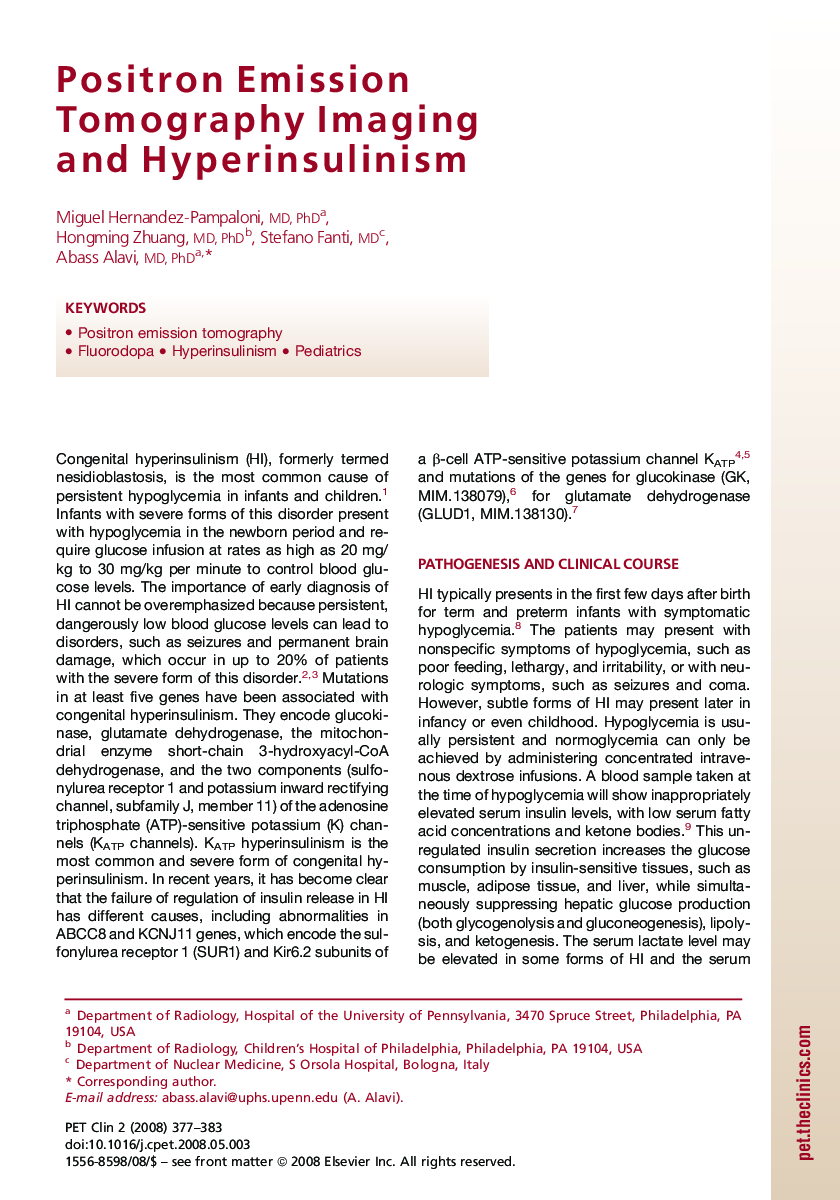| Article ID | Journal | Published Year | Pages | File Type |
|---|---|---|---|---|
| 3817843 | PET Clinics | 2007 | 7 Pages |
Abstract
Congenital hyperinsulinism is the most important cause of recurrent hypoglycemia in infancy and can be caused by two different histopathologic lesions, a focal or a diffuse form, based on different molecular abnormalities despite an indistinguishable clinical pattern. The differential diagnosis between the two forms is pivotal because focal disease is potentially curable by selective resection of the pancreatic focus, whereas diffuse forms require a subtotal pancreatectomy. Different conventional imaging modalities and invasive selective arterial calcium stimulation have been used to identify the two forms of the disease. Positron emission tomography imaging is a widely recognized noninvasive modality that is now standard of care for many oncologic processes based on its metabolic and functional capabilities. Based on the properties of L-dihydroxyphenylalanine as a precursor of catecholamines, this paper reviews the current and future potential applications that this technology has in accurately diagnosing the two main forms of congenital hyperinsulinism.
Related Topics
Health Sciences
Medicine and Dentistry
Medicine and Dentistry (General)
Authors
Miguel MD, PhD, Hongming MD, PhD, Stefano MD, Abass MD, PhD,
